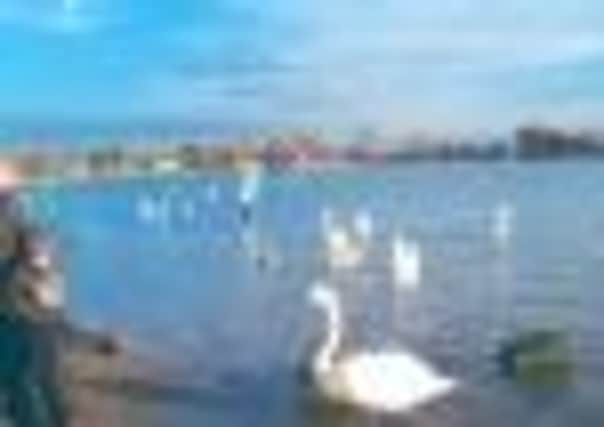Glassy bangles on swans' legs


They found the fresh water inflow of Fishbourne a bit too frozen up for them. Ice often sets at high tide on that envelope of fresh spring water which the tide holds for several hours before letting it all drain down to Wittering.
Normally they love its taste and spend the whole winter at Fishbourne but this winter it began to put glassy bangles around their legs.
Advertisement
Hide AdAdvertisement
Hide AdBosham was better except no fresh water to drink. But there were compensations- free handouts from the tourists.
Townies from Surrey and even London enjoy the picturesque village and often cause amusement among some of the locals when they learn too late that salt water and cars do not mix.
In the local pub there used to be photos of car roofs but little else showing. The tide runs swiftly into that cul-de-sac and your car is ruined in minutes.
Apart from that, Bosham is all welcoming. Even the brent geese, wild as hawks in Russia where the natives pinch their eggs and the foxes eat their goslings and some are herded up when flightless for winter rations for the Samoyed tribes, are absurdly tame in Bosham.
Advertisement
Hide AdAdvertisement
Hide AdI have seen them almost as tame as these swans which I photographed last month.
They are not interested in bread handouts, only the algal seaweed entermorpha which has caused conservationists such concern over the past 40 year, who fear it for the pollution it demonstrates.
At least the geese can benefit from such a monoculture of seaweed. oon the brents will fly back to Russia. Soon the swans will fly back to their little ponds and lakes, canals and rivers in the county.
Although the county swan total is about 700 birds, only about 100 pairs dreed here.
Advertisement
Hide AdAdvertisement
Hide AdFirst eggs are laid sometimes as early as the first week in April and cygnets in mid May are the norm.
A thousand years ago, the mute swan was probably still found wild in winter, flying in from the freezing Baltic. And 800 years ago there were introduced more or less as poultry; a farm crop for the table.
If you had property to the value of five Marks, you could claim ownership of your swans, but you had to mark them on the beak to stop some other landowner pinching them.
I don’t know whether many people today have tried eating a swan. I have and it wasn’t at all bad, rather like corned beef.
Advertisement
Hide AdAdvertisement
Hide AdThat was way back in the days of meat rationing when as youths we scoured the countryside for meat, whether rabbits, snipe, mallard.
One day I saw a wildfowler shoot a mute on the marshes. It came down like a sack of potatoes.
He said: “Keep it boy if you want it. It’ll feed the family for three days. And so it did. It was best cold, between two slices of bread and butter, sliced wafer thin.